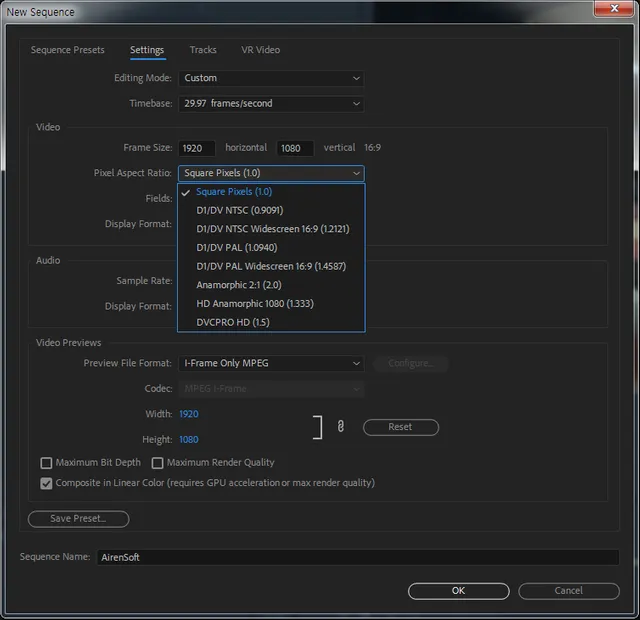This is the third session of the Metadata series. Let’s study Aspect Ratio today! Aspect Ratio means the ratio of the screen. However, the ratio of the screen is a different concept from “What is Frame Size” that we learned before. While the Frame Size is the length of the width and height, the Aspect Ratio is the ratio of the width and height based on the size determined by the Frame Size.

If you are editing videos or video effects, you need to be familiar with Premiere Pro, After Effects, or Final Cut Pro. No matter what program you use, you need to set Frame Size, Frame Rate, and Aspect Ratio when you create a new sequence.
Why is Aspect Ratio important?
Aspect Ratio is one of the parts most people overlook and neglect, but the ratio is very important on the screen.

Video has a Letterbox/Pillarbox or Stretched/Cropped because video ratio does not match the screen size. In other words, the video looks strange, unlike your intentions.

Well… Letterbox/Pillarbox may be better than Stretched/Cropped because people can watch your video even at small sizes.

However, if it is Stretched/Cropped, everybody who expected your video will be disappointed. That’s because you ignored Aspect Ratio.
Let’s study Aspect Ratio options!
What programs do you use for video editing or effect? As I experienced, many types of software that edit videos are in different names, but they can set up Aspect Ratio. So I will explain based on Premiere Pro that I have used just now.

When you create a new sequence in Premiere Pro, there are various ratio options in the setting menu such as Square Pixels (1.0), NTSC Wide Screen (1.2121), PAL Wide Screen (1.4587), and Anamorphic (2.0). However, what we have to pay attention to are digits attached to terms such as (1.0), (1.2121), or more.
(1.0) means the ratio of width and height of each pixel that composes the screen. The pixel is very small dot that comprises the screen. All videos and images consist of numerous square dots like mosaics, and we call this box Pixel. That is, if the size of the screen you are viewing is 1920x1080 (1080P, FHD), it is a screen made of 1,920 pixels in width and 1,080 pixels in height.

Therefore, Square Pixels (1.0) is a setting that the screen consists of square boxes a 1: 1 ratio of width to height. Another example is Anamorphic (2.0). The ratio of width to height is 2:1, so the width is longer than the screen with Square Pixels. Thus, it might be better to use (1.0) ratio option to reduce your mistake.
Should I use Square Pixel (1.0) only?
The answer to this question is “Nope!”. Aspect Ratio is adjusted based on Frame Size, so Square Pixel (1.0) is not necessarily correct all the time. For example, if you want to play a video of 16:9 viewing on a monitor of 4:3 without Letterbox, you need to use Anamorphic (2.0).
Also, you want to make the video with a special ratio like 21:9 as you intend, you need options suitable for that. In other words, there can be numerous ratio options depending on equipment, situation, and intention. Moreover, what is most important is your planning and purpose. Please keep in mind that Aspect Ratio is adjusted based on Frame Size.
Thank you!
--
This post has been moved from AirenSoft Blog. If you read this article and are interested in our technology, please visit our blog.
Congratulations @airensoft! You have completed the following achievement on the Steem blockchain and have been rewarded with new badge(s) :
You can view your badges on your Steem Board and compare to others on the Steem Ranking
If you no longer want to receive notifications, reply to this comment with the word
STOPVote for @Steemitboard as a witness to get one more award and increased upvotes!
Downvoting a post can decrease pending rewards and make it less visible. Common reasons:
Submit